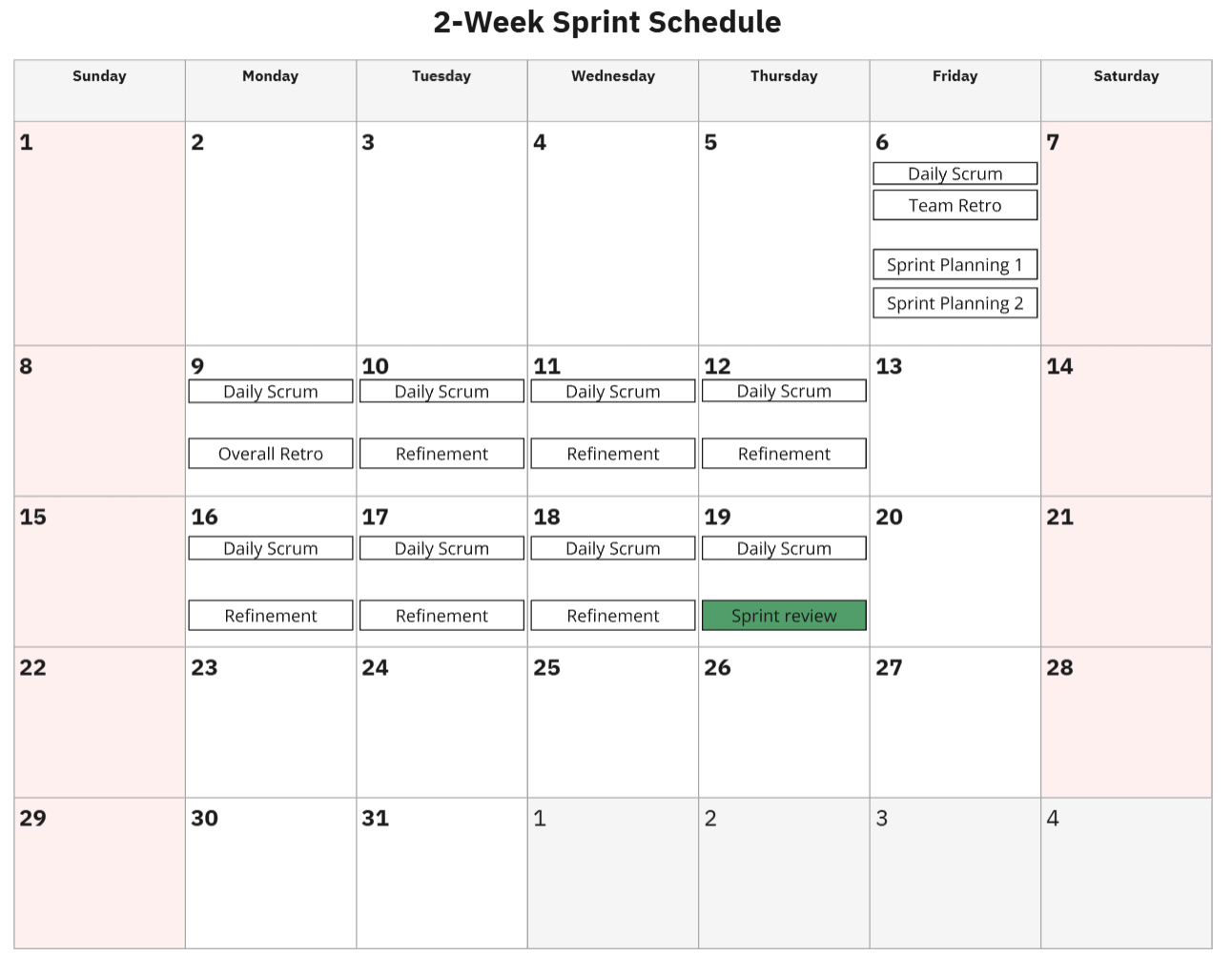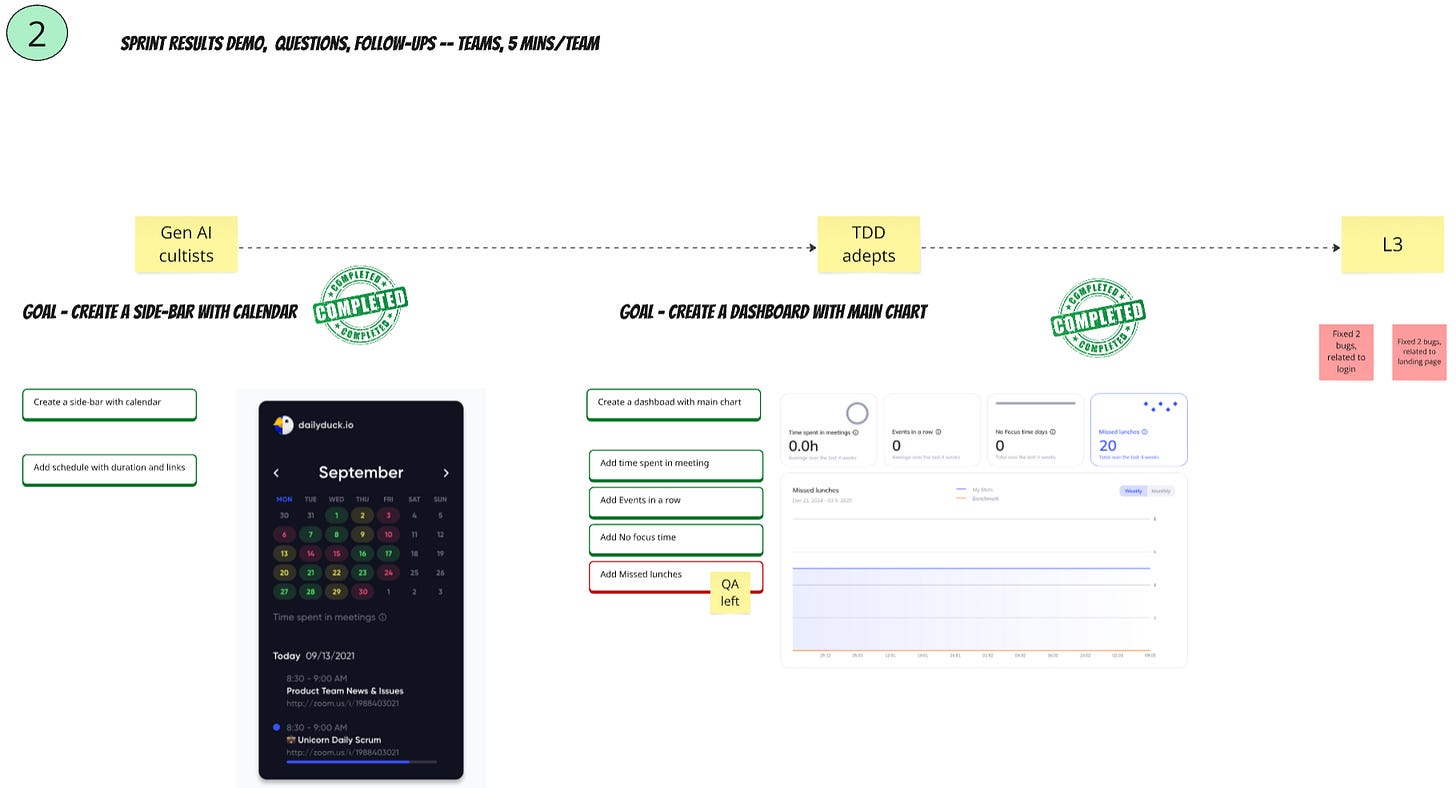Whenever I get involved with a team that’s struggling—maybe they’re not delivering well, or there’s visible misalignment with stakeholders—there are a few things I check right away. One of the first? Sprint Review.
And in 80% of those cases, either the team doesn’t do Sprint Reviews at all, or what they do looks nothing like a real review. No transparency, no feedback loop, no alignment. Just a quiet demo—or worse, a skipped meeting.
But a good Sprint Review changes everything. It builds trust. It keeps stakeholders close. And it creates a rhythm where feedback and celebration are part of the process—not an afterthought.
In this article, I’ll break down why Sprint Reviews matter, share a few lessons from my own experience running them, and give you a simple template to make them way more effective.
What Is a Sprint Review?
A sprint review happens at the end of a sprint.
The development team presents what they’ve built, gathers feedback, and discusses what’s next.
It’s an interactive session where stakeholders and team members engage in meaningful conversations about the product’s direction.
Here’s an example of a 2-week sprint schedule — the Sprint Review is held on the last day of the sprint:
Why Sprint Reviews Matter
Here’s what you get from a well-run Sprint Review:
👀 Transparency – It gives everyone a clear view of progress and any roadblocks.
🔄 Feedback Loop – Stakeholders can provide early input before features are finalized.
⚖️ Alignment – Ensures the team and stakeholders are on the same page.
🎉 Celebration – Recognizes the team’s efforts and achievements.
Not sure if your Sprint Review is working? Ask your team, Product Owner, and key stakeholders how you're doing on these four points. Their answers will tell you everything you need to know.
How to Run an Effective Sprint Review
📝 Use a Template in a Whiteboard Tool (e.g., Miro)
Leverage visual collaboration tools like Miro to structure your sprint review. A clear template helps keep discussions organized and ensures that key points aren’t missed. Here’s an example we use in Miro for our events:
⏳ Prepare in Advance
Don’t leave the review to the last minute. After your daily sync or another team meeting, discuss with the team what they’re going to show and who will present each part. This avoids confusion and makes the session smoother.
👥 Involve the Right People
Invite product owners, support, commercial teams, other stakeholders, and even end-users if possible. Their input is valuable in shaping the next steps.
🖥️ Show, Don’t Tell
Instead of talking through what was completed, let the work speak for itself. Show working features, prototypes, or updated designs.
🎯 Keep It Focused
Structure the meeting around key areas:
Recap sprint goals – What did the team aim to achieve?
Demonstration – Show what was built and how it works.
Feedback collection – Allow stakeholders to weigh in.
Discuss what’s next – Adjust priorities based on insights gained.
💬 Encourage Questions and Feedback
Don’t treat feedback as criticism. Keep discussions open-ended and solution-oriented.
Recommended Agenda
I often use this agenda format in my teams, and it keeps the meeting structured, efficient, and engaging for everyone involved.
☕Small talk [5 minutes].
Warm-up the meeting with light conversation to set a positive tone.
It also gives latecomers time to join.
Review the agenda and remind everyone about it.
Here’s an example from our template:
🎯 Sprint Goals [5 minutes]
The Product Owner reminds the team of the sprint goals as an introduction to the meeting.
🖥️Teams Presentations [5-10 minutes per team].
Each team presents their completed work for the sprint, highlighting key achievements, challenges, and lessons learned.
Live demos or screenshots of features, bug fixes, or technical improvements are shown.
Stakeholders and other teams can ask questions and provide feedback.
Discussions around dependencies, blockers, and next steps take place.
I highly recommend paying attention to the L3 team’s presentation. This helps everyone stay informed about what’s happening in the operational part of the system, ensuring awareness of ongoing issues.
Here’s an example of this section featuring two Scrum teams (GenAI Cultists and TDD Adepts) along with L3 support:
📊Metrics and Goals [5 minutes].
Engineering leaders present the most important metrics they want teams to focus on. For example, if infrastructure costs are a major priority this quarter, this metric should be reviewed in every sprint.
We do this in the sprint review to ensure transparency, foster continuous improvement, and keep the team and stakeholders informed.
Here’s an example with deployment metrics:
📈Market Updates and Backlog Adjustments [5 minutes].
The Product Owner provides insights into market trends, competitor moves, or industry shifts that could impact the product strategy.
Any backlog adjustments needed to align with market conditions or company priorities are discussed.
💬Closing [5 minutes].
Participants can provide feedback on the sprint review itself, discussing what worked well and what could be improved.
Teams and stakeholders can raise any final thoughts or concerns before wrapping up.
Here’s an example of closing section:
Sprint Review for Non-Scrum Teams
Sprint reviews aren't just for Scrum teams—they can be valuable for any team looking to improve transparency and collaboration. Non-Scrum teams, such as operations, marketing, or infrastructure teams, can also benefit from a structured review process.
How Non-Scrum Teams Can Adapt Sprint Reviews:
Project and Initiative Updates – Instead of reviewing completed user stories, non-Scrum teams can present progress on ongoing initiatives.
Stakeholder Involvement – Engaging with other teams ensures alignment on company-wide priorities.
Challenges and Lessons Learned – Teams can use this time to discuss insights gained.
Even if your team doesn’t follow Scrum, regular structured reviews can improve communication, highlight progress, and create a culture of continuous improvement.
Curious what else I check when helping a manager with their team?
Read these articles:
Retrospectives – Does the team actually understand their purpose? Are they identifying meaningful improvements, or just going through the motions?
Backlog Refinement – How can we turn it into a space for real collaboration, not just another passive call?
Stakeholder Transparency – Where is it missing? Are stakeholders getting the right communication early enough?
Final Thoughts
A great sprint review isn’t just about showing what’s built—it’s about collaboration. You create a space where teams and stakeholders align on delivering the best possible product. Run your next sprint review with this mindset, and you’ll see the difference! 🎯
Thanks for reading and if you found this helpful, feel free to share it with a friend or colleague who might benefit from these insights!












